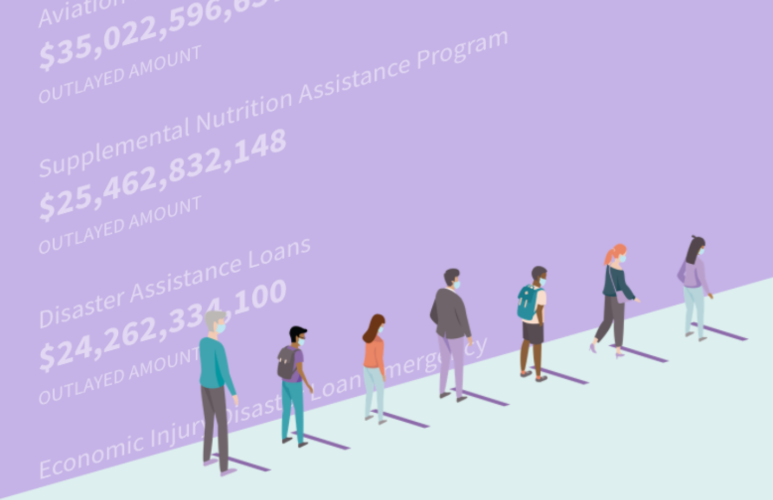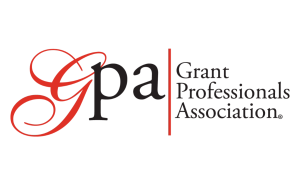In fundraising, individual donations are considered the holy grail and grants are fool’s gold. Grants don’t get a lot of respect even though they’re integral to most nonprofit budgets. You’ve heard the complaints or made them yourself: Grants have a short life span. They come and go. You can’t spend the money flexibly. The red tape and reporting requirements are extreme. The time lapse between request and award decision is excessive.
The role of grant funding in the nonprofit sector far outpaces the rate of individual giving. The National Philanthropic Trust’s general philanthropy data in 2019 showed that corporate grants totaled $21.09 billion and foundation grants totaled $75.69 billion. USAspending.gov reports that federal grants totaled almost $765 billion that year, and that doesn’t count billions of dollars in government grants made by state, county, and municipal funds amassed from taxes, fines, license fees, and the like.
All told, grant funding in 2019 easily surpassed $862 billion – more than double the $309.66 billion donated by private citizens as reported in the National Philanthropic Trust’s general philanthropy data which is curated from a variety of recent reports on charitable giving in the U.S.
Government grant dollars are now and have long been essential to society’s pursuit of the common good, offering essential support for the safety net services provided by America’s nonprofits. The National Council on Nonprofits reported that in 2019 the sector earned more than 80 percent of its revenue through fees for services and government contracts and grants, with only 14 percent of revenue coming from philanthropic donations — from individuals (10.2%), foundations (2.9%), and corporations (0.9%).
Despite their role in nonprofit budgets, grants and the staff members responsible for securing them are largely undervalued. Major nonprofit publications allot sparse real estate to trends, changes, opinions, and news related to grants. The myriad issues related to proposal development are poorly represented in the curricula of colleges and universities providing degrees or certificates in nonprofit management or philanthropy.
Although around 70% of those responding to the Grant Professionals Association’s 2020 Salary and Benefit Survey held a graduate or professional degree, their average salary was $71,500, compared to $85,000 for a fundraising professional as reported in the 2020 Compensation and Benefits Report of the Association of Fundraising Professionals. Most grant professionals are not involved in strategic planning or goal-setting, and many are simply instructed to bring in more grants with little instruction or support.
Grants are social investments, and to wring all the impact we can out of those investments we need to recalibrate our thinking. Grant funding is more appropriate for some purposes than others. When organizations turn to grants to cover every funding need, the motivation behind a proposal is dollars rather than purpose, and the change-making power of grants work is lost. But when pursued strategically and woven logically into a nonprofit’s overall funding framework, grants can play a vital role that moves missions forward and increases organizational capacity.
With thought and effort, you can change grants from catch-as-catch-can income into an intentional supplement to other revenue streams. Start by pulling together your grant professional(s) or grant consultant(s), fundraising staff, financial staff, and administrators to explore the best, most impactful role grant funding can play in pursuing the priorities laid out in your organization’s strategic plan. Here are some question to explore:
- What community needs require the development of new programs or services? Start-up programming is an appropriate role for grant funding. Working together, your team can determine initial funding requirements and lay out a long-term plan for maintaining impact once the grant ends.
- What laws or systems are impeding the progress or well-being of those you serve? Grant funding is a great resource for pursuing systems change. Once you’ve achieved the intended outcomes, community partners or volunteers may be able to help you monitor implementation.
- What internal organizational systems are hampering top-notch efficiency or effectiveness? Is an inadequate data system deep-sixing effective evaluation? Could a robust volunteer management system increase reach and impact without substantially increasing funding needs? Does the organization need a new strategic plan? Because capacity-building projects yield results far into the future, they are excellent candidates for grant funding.
- Would private or corporate foundations with which you have strong relationships be willing to provide a shot of general support to keep the bones of your organization strong while you continue to build individual giving income and secure adequate indirect support from each of your grant funders?
- What community needs align directly with both your organization’s mission and ongoing federal or state grant funding programs? While these sorts of grant programs are still vulnerable to national- and state-level changes, many have been operating for years and can support critical, much needed services in your community.
- Is there a community need so urgent that failing to address it would amount to organizational neglect? In this situation, grants can provide lifeline support while you work with community partners to figure out long-term, sustainable funding approaches.
When we stop thinking of grants as cash to be grabbed and start thinking of them as investments, building blocks, supplements, fire-starters, and sometimes as short-term lifelines, things will change. We’ll see grants work integrated into organizational planning. We’ll see grants professionals at decision-making tables. We’ll see annual proposal development calendars that reflect organizational priorities and staff capacity.
The role of individual giving, membership drives, events and the like will always be critical to nonprofits. That income along with well-targeted and strategic grant funding will build and sustain the community-level safety net services provided by America’s nonprofits.
There’s much to be accomplished, and we can only do the work by leveraging the full power of each available resource. Approaching grants intentionally and elevating the quality of grants work within our organizations are critical steps in realizing the immense change-making power of grants as tools for social change.
*****
Barbara Floersch is a long-time contributor to The NonProfit Times, and until recently a Grantsmanship Center trainer and the center’s chief of training and curriculum. Her latest book, You Have A Hammer: Building Grant Proposals for Social Change, was released earlier this year and can be found at www. Barbarafloersch.com











